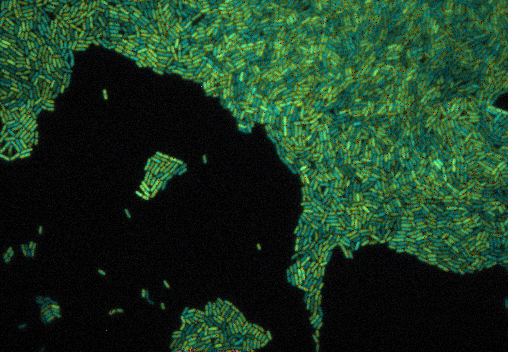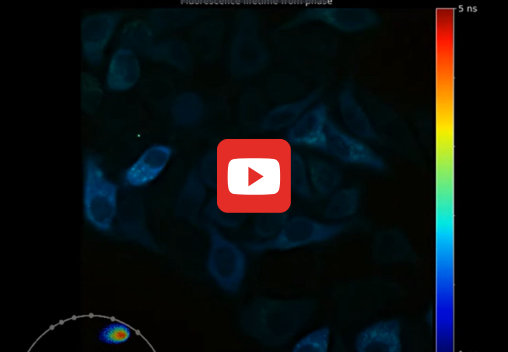< Back
Intensifier Control
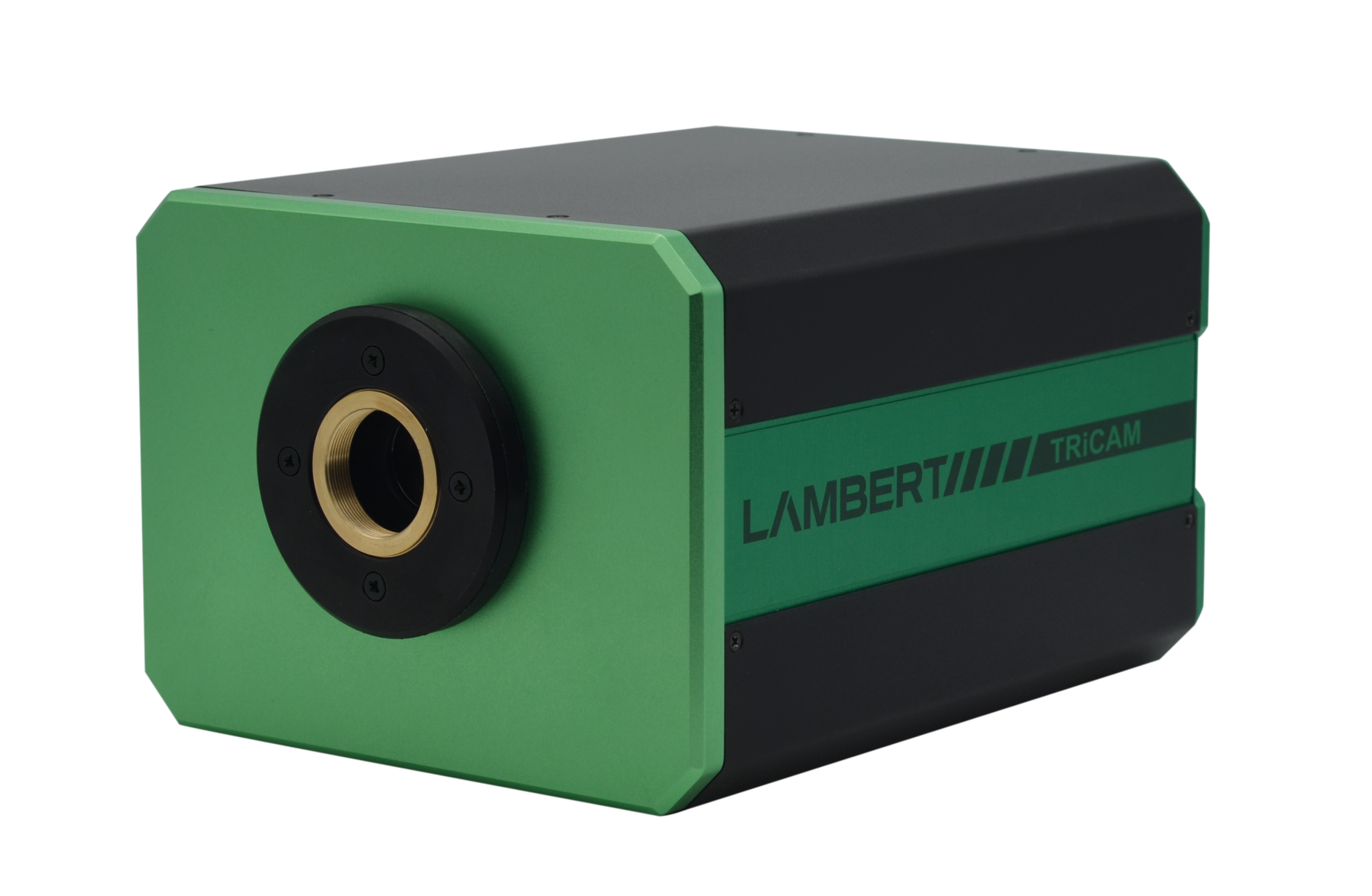
COMPACT AND COST EFFECTIVE
10-20 times more light efficiency in a compact and light weight form
HIGHLY CUSTOMISABLE
choose from a wide variety of high sensitivity image intensifiers to match the needs of your application
SINGLE-PHOTON SENSITIVE
high sensitivity supplemented with an acquisition speed up to 160 fps.
Description
The TRiCAM is a compact intensified low-light imaging CMOS camera. It is designed for scientific and industrial applications that require low-light imaging. With built-in signal generators, the TRiCAM is capable of ultra-short exposures through fast gating and therefore suitable for time-resolved imaging.
Applications
Laser Induced Fluorescence (LIF)
Time-gated luminescence
Bio- and chemiluminescence imaging
Plasma physics
Single Photon imaging
Particle Image Velocimetry (PIV)
Solar PV and LED characterization
Combustion research
Single-molecule imaging
Fluorescence Lifetime-Imaging
Microscopy (FLIM)
Förster Resonance Energy Transfer
(FRET)
Time-gated Raman / Laser Induced
Breakdown Spectroscopy (LIBS)
Time-resolved imaging & spectroscopy
Diffuse Optical Tomography (DOT)
High voltage Partial Breakdown (Partial discharge)

Features
Gated image intensifier
The TRiCAM is equipped with an integrated timing pulse generator and a gate-unit, generating gate pulses down to < 3 ns.
Low-light imaging
The TRiCAM has a built-in image intensifier that boosts the incoming light. This way, you can capture detailed images in the most challenging light conditions.
Fiber-optically coupled
Our experienced engineers couple the sensor to the image intensifier with a fiber-optic plate, resulting in a 10 – 20x more light efficient system. The fiber-optic plate is a solid piece of glass that consists of millions of parallel glass fibers sealed together. Each fiber acts as an independent light conductor that transfers the light from the image intensifier to the sensor.
Ultra-short gating
The image intensifier in the TRiCAM can be used as an ultra-fast electronic shutter. This technique is called gating and it can be done in a matter of nanoseconds.
Gating can eliminate motion blur when imaging fast-moving objects or highly dynamic processes. By varying the timing of the gate signal very precisely (tens of picosecond resolution), you can use gating to record a time-resolved light intensity profile.
Optimised for your application
The TRiCAM can be configured with a wide range of image intensifiers. Available image intensifiers cover the entire visual spectrum and the near infrared.
High-resolution sensor
The TRiCAM features a high-resolution CMOS sensor. It captures stunningly detailed images at 1920 x 1200 pixels.
160 fps
At up to 160 fps, the TRiCAM can record slow-motion footage, even in low-light conditions.
Global shutter
With its global shutter readout method, the sensor in the TRiCAM eliminates rolling shutter effects in your images.

Image Intensifiers
An image intensifier boosts the intensity of the incoming light. By converting photons to electrons and back to photons, the light intensity can be increased significantly. Scroll down for more information about how this works.
Another feature of an image intensifier is that it can act as an ultra-fast shutter. The photocathode can be switched between on and off in a matter of nanoseconds.

Low-light imging
The TRiCAM has a built-in image intensifier that boosts the incoming light. This way, you can capture detailed images in the most challenging light conditions.
Our experienced engineers will help you pick the right image intensifier for your application.

Photocathodes
The photocathode is the entrance of the image intensifier. This is where the incoming photons are converted to electrons. The quantum efficiency of the photocathode material specifies how efficient this conversion is for each wavelength.
Images
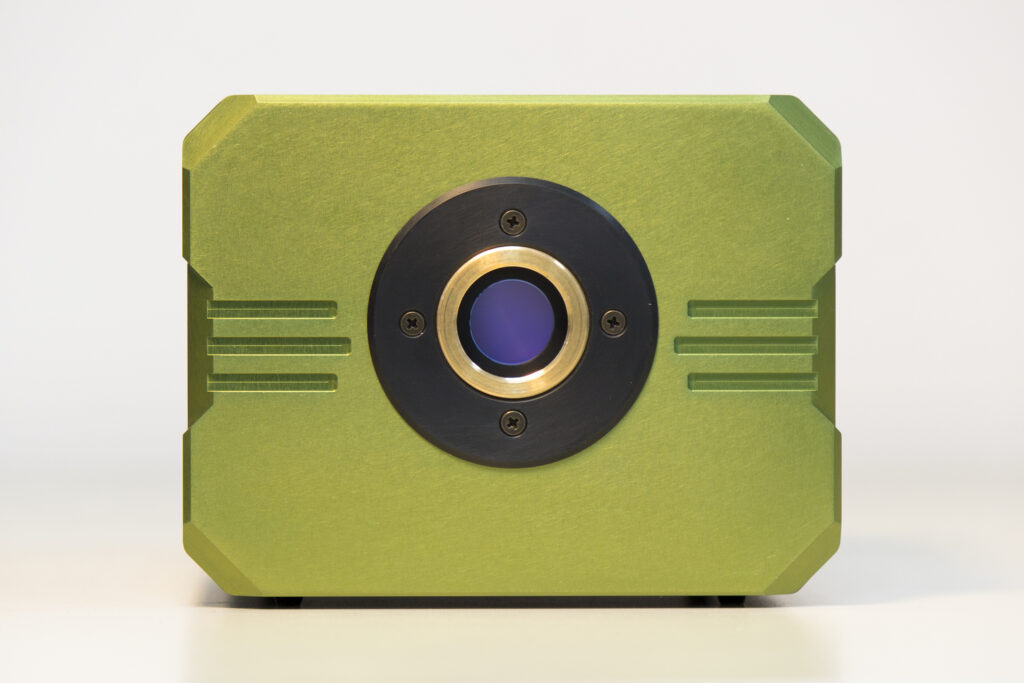

Specifications
IMAGE INTENSIFIER
Diameter: 18 mm
Minimum Gate Width: 40 ns (< 3 ns optional)
Maximum Repetition Frequency: 300 kHz
Trigger Input: TTL
SENSOR
Resolution: 1920 x 1200 pixels
Pixel Size: 5.86 µm
Frame Rate: 162 fps
Sensor Type: CMOS
Readout Method: Global Shutter
ADC: 10 bit and 12 bit
Downloads
For more information on the TRiCAM CMOS Camera, please download the brochure.
Request more information
Lambert Instruments BV
Leonard Springerlaan 19
9727 KB Groningen
The Netherlands
User Publications
Researchers around the world use the TRiCAM in their studies. Opposite is an overview of the most recent publications describing research that was done using a TRiCAM.
For a complete overview of applications, please visit our applications pages.
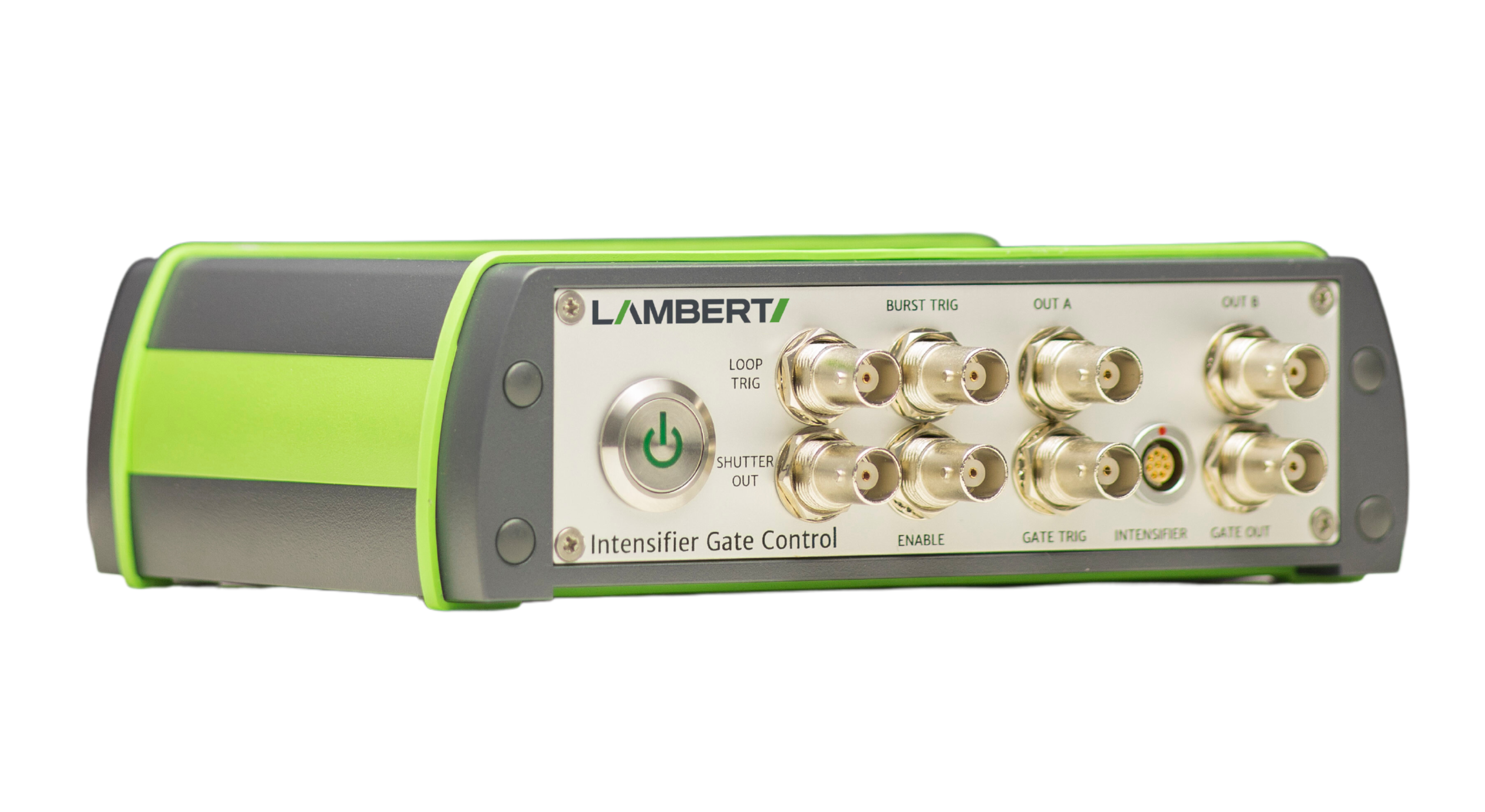
COMPACT
and possibility to request for custom firmware
EFFICIENCY
Computer controlled by USB connection
SIMPLICITY
Seamlessly integrates with Lambert Instruments’ intensifier attachments
Description
For integration into a larger system or for automated measurements, the gain control unit for automated systems lets you control the settings of the intensifier attachment. The control unit uses standard TTL and analog signals for communication, allowing the user to switch the intensifier on or off, alter the gain and the anode current limit of the image intensifier without the need of software integration.
Applications
Time resolved imaging
Synchronization imaging
Rapid Gate switching to improve dynamic range
To be used with Lambert Instruments’ Intensifier Attachments.
Features
Image Intensifier Gain
By increasing the image intensifier gain, the incoming light intensity will be boosted more, resulting in a brighter image. The intensifier control for automated systems lets you control the gain of the image intensifier.
Anode Current Limit
To protect the fragile image intensifier from being damaged by overexposure, the anode current limiter can be used to set a limit for the acceptable anode current. If the anode current exceeds this value, then the image intensifier will be switched to a safe mode.
Compatibility
The gain control unit for automated systems is compatible with our intensifier attachments: HiCATT and TRiCATT
Specifications
A synchronisation signal is needed in order to create an output at the three outputs of the intensifier gate control. This signal can originate from different sources:
External source: For instance a signal from a frame grabber or a connected camera.
Software command
Internal sync source: Gives synchronisation pulses with a fixed frequency. Can generate pulses at frequencies between 0.5 Hz and 4 MHz.
When using an external synchronisation source, the following modes are available:
– Synchronise with rising edge of external input pulse
– Synchronise with falling edge of external input pulse
– Follow external input pulse
Advanced gating modes (can be customised to a further extent)
– Burst mode
– Multiple exposures per sync pulse
– Multiple exposures and Burst mode
– Rapid gate-setting switching
– Enable gate
– Precision gating
| Timing Resolution | 250ps |
|---|---|
| Jitter Pulse Width | <250 ps RMS |
| Jitter Delay | <250 ps RMS |
| Sync with falling/rising edge | Follow external output post | |
|---|---|---|
| Pulse width /delay range | 10ns – 10s | 10ns – 10s |
| Timing resolution (Step size) | 10ns | 10ns |
| Jitter pulse width | <10ps RMS | <10ps RMS |
| Jitter delay | <10ns RMS | <250ns RMS |
| Insertion delay | 30ns | 20ns |
Request more information
Lambert Instruments BV
Leonard Springerlaan 19
9727 KB Groningen
The Netherlands

10 MHz IN
BURST FOR MORE THAN 250 FRAMES
for low light imaging with increased sensitivity
CYCLED
BURSTS
adjust for changing light levels by cycling through three different gate widths
IN-SITU FOCUS ADJUSTMENT
outer-body focus ring adjusts the internal relay optics without altering total length
Description
The High-speed Intensified Camera Attachment (HiCATT) is designed for use with a high-speed camera. It increases the sensitivity of your camera and enables low-light imaging at frame rates up to 1 MHz (10 Mhz in burst)
The technology in the HiCATT expands the dynamic range of your high-speed camera. At low light levels, even single photons can be detected. While at high light levels, overexposure can be prevented by very short exposures (down to 3 ns). These short exposures yield sharp images of fast moving objects.
Applications
Combustion research / Hydrogen discovery
High-speed fluorescence, bioluminescence and chemiluminescence detection for in-vivo imaging
Super-slow motion combustion research for the automotive industry
Time-resolved imaging in plasma physics research
Dynamic phenomena in microscopy
Laser-Induced Fluorescence (LIF)
Many other industrial or scientific low-light-level applications in high-speed imaging
UV imaging for hydrogen and fusion
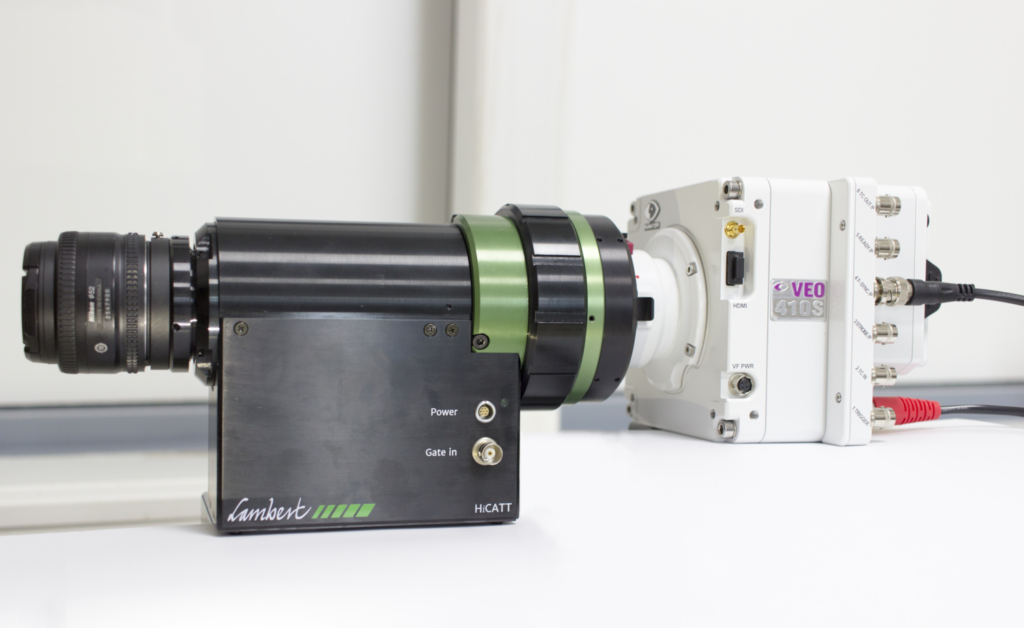
The HiCATT is an intensifier attachment for your high-speed camera. It provides increased light sensitivity for high-speed imaging applications. In this photo, the HiCATT is attached to a Phantom Veo 410S.
Features
Optimised for your application
The HiCATT can be configured with a wide range of image intensifiers. Our experienced engineers will help you pick the right image intensifier for your application.
High-speed Imaging
The HiCATT upgrades your high-speed camera to the next level of performance. It boosts the intensity of incoming light at speeds up to 1,000,000 fps.
Ultra-short exposures
The gated image intensifier enables exposure times down to 3 ns. At such short exposure times, motion blur is eliminated completely to ensure sharp images.
50% QE high-sensitivity intensifiers
You can choose from a wide variety of high-sensitivity image intensifiers to match the spectral needs of your application.
Rotating camera mount
Safe and easy camera coupling keeping the HiCATT and the camera in their intended orientation.
Compatible with Shimadzu and Vision Research – We can provide fully integrated solutions tailored to your setup.

Match my camera
The relay optics of HiCATT and TRiCATT project the output of the image intensifier onto the sensor of your camera. This calculator helps you determine the optimal configuration of image intensifer diameter and relay optics for your camera and application.

Image Intensifiers
An image intensifier boosts the intensity of the incoming light. By converting photons to electrons and back to photons, the light intensity can be increased significantly. Scroll down for more information about how this works.
Another feature of an image intensifier is that it can act as an ultra-fast shutter. The photocathode can be switched between on and off in a matter of nanoseconds.

Photocathodes
The photocathode is the entrance of the image intensifier. This is where the incoming photons are converted to electrons. The quantum efficiency of the photocathode material specifies how efficient this conversion is for each wavelength.

Phosphors
The output of the image intensifier contains a layer of phosphorescent material. Upon impact of an electron, the phosphor screen will emit light. Depending on the type of phosphor, the intensity of the emitted light will decrease faster.
Videos
Butane-Propane Flame at 4200 FPS
Flames (mix Butane – Propane) at 4200 fps and 40 us gate open time (effective exposure time), HiCATT 25 image intensifier, high-speed camera attachment with Phantom V4.0 high-speed camera.
Electronic Discharge at 47000 FPS
Electronic Discharge at 47000 fps and 3 us gate open time (effective exposure time), HiCATT 25 image intensifier, high-speed camera attachment with Phantom V7.1 high-speed camera.
Gunshot at 15000 FPS
Non-Intensified vs. Intensified recording of a gunshot with a Phantom V7.1 high-speed camera. Part 1: recorded at 15000 fps and 61µs gate open time (effective exposure time). Part 2: recorded at 15000 fps and 2µs gate open time.
Gas Combustion at 5000 FPS
Gas combustion observed at 5,000 fps with HICATT High Speed Image Intensifier, Gen 2, 10µs exposure time. The HICATT High Speed Intensifier used for this video was coupled to a NAC Memrecam camera. It is also compatible with pco.Dimax, Phantom, Photron Fastcam or Optronis cameras.
Request More Information
Lambert Instruments BV
Leonard Springerlaan 19
9727 KB Groningen
The Netherlands
User Publications
Researchers around the world use the HiCATT in their studies. Opposite is an overview of the most recent publications describing research that was done using a HiCATT.
For a complete overview of applications, please visit our applications pages.
Ultraviolet Laser Absorption Imaging of High-Speed Flows in a Shock Tube
May 22, 2023 Combustion
Mach 4 Flow Velocimetry with 100-kHz PLEET and PIV in AEDC/AFRL Tunnel D Jan 4, 2022
Simultaneous OH, CH2O and flow field imaging of near blowoff dynamics Jan 4, 2022
Meteorite Ablation and High-Speed Emission Spectra in Plasma Wind Tunnel Jan 4, 2022
Ultraviolet Laser Absorption Imaging of High-Speed Flows in a Shock Tube Jan 4, 2022
Featured HiCATT users



Custom Solutions
High-End Custom Imaging Solutions for Low Light Applications
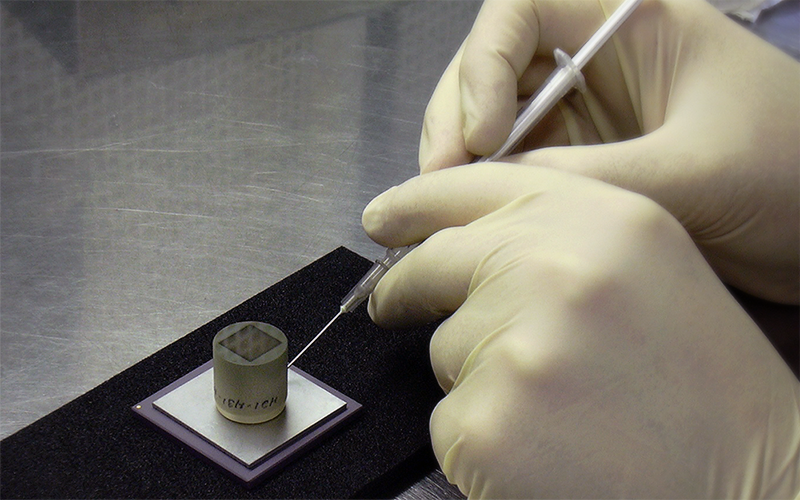
Description
Lambert Instruments specialises in high-end imaging solutions and is known for producing Custom Imaging Products. Custom imaging products for low-light level applications can be made according to customer specifications.
These can be made according to customer specifications, such as special multi-stage intensifiers, cooled intensifiers, intensified high-speed cameras, intensified CCD cameras, intensified CMOS CCD cameras, and image sensors with fibre optic input windows.
Sensors
Our standard product range offers only a part of the available types of camera sensors. But our custom solutions can include just about every type of sensor you can think of.
We have experience with
– Line-scan sensors
– Fiber-coupled scintillators
– Fiber-coupled line scan/TDI sensors
– Sensors with interchangeable fiber-optical window
-High speed spectral imaging
Image intensifiers
Lambert Instruments has over twenty years of experience with image intensifiers. Our engineers are experts in choosing the right image intensifier for your imaging application.
Our highly specialised customs products include
– Cooled image intensifiers for ultra-low noise
– Specialised image intensifier configurations for corona imaging in high-voltage applications
– Multi-stage image intensifiers with multiple boosters
Custom software solutions
Lambert Instruments offers custom software solutions for a wide variety of imaging standards, including
– GigE Vision
– GenICam
– CoaXPress
– CameraLink
For more information about our standard software solution, please visit our software page.
Request more information
Lambert Instruments BV
Leonard Springerlaan 19
9727 KB Groningen
The Netherlands
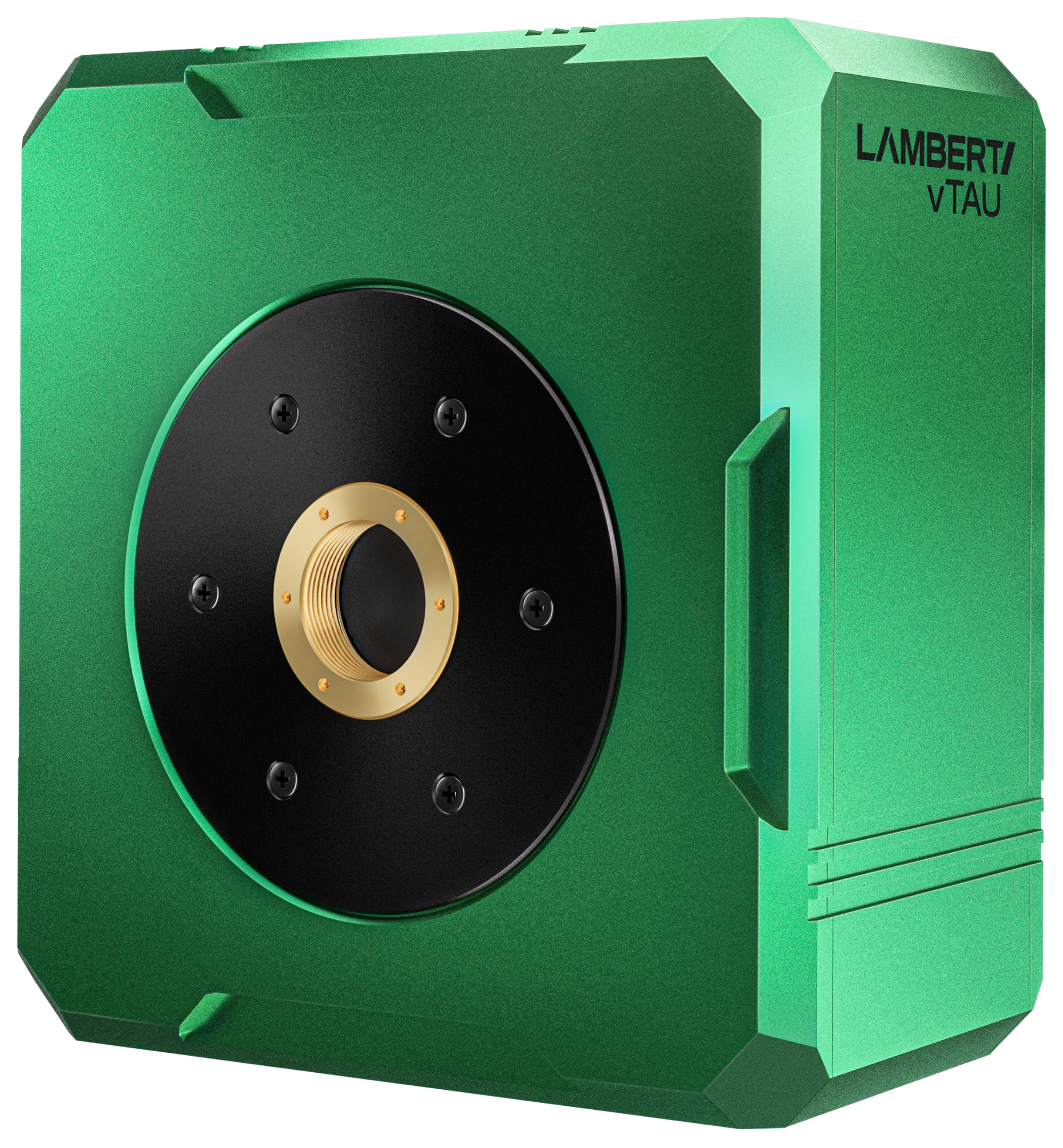
VERSATILE
available in Widefield, Spinning-disk confocal, and TIRF configurations as well as Spectral and SPIM
AFFORDABLE
a cost-effective way of doing quantitative FLIM
COMPATABLE
LIFA is compatible with every type of fluorescence microscope with a camera output
Description
The Lambert Instruments LIFA FLIM system is the fastest and easiest way to perform Fluorescence Lifetime Imaging Microscopy (FLIM).
Available in versatile configurations dependent on your specific applications, the LIFA system offers a turn-key solution for fluorescence lifetime imaging microscopy. Compatible with any fluorescence microscope with a camera output – including microscopes by Leica, Nikon, Olympus, TILL and Zeiss. Set up is quick and easy, with all hardware integrated seamlessly with our dedicated LIFA software, so you can focus on your experiment.
The advanced software instantly analyses data and presents the calculated fluorescence lifetimes visually. Recorded images are compatible with ImageJ, FIJI, Matlab and MetaMorph, while detailed statisitcal data can be exported to an Excel worksheet.
Read more about LIFA software.
Features
Experiments from start to finish
From recording images to lifetime calculation and data analysis
Dedicated LIFA software
Using our stand-alone LIFA Software, you can instantly calculate the fluorescence lifetime and presents it as a colour coded overlay and a phaser plot.
Comprehensive SDK
Our software development kit (SDK) provides a flexible platform for integrating and automating experiments, offering you full control and customization of your fluorescence lifetime measurements.
Broad Lifetime Range
From sub microsecond down to picoseconds
Multiple configurations
System components to suit your applications
Non-phototoxic illumination
Applications
Bacteria research
B. subtilis cells where GFP-tagRFP fluorophores are linked are mixed in a 1:1 ratio with B. subtilis cells where the GFP-tagRFP fluorophores are cleaved apart; resulting in a mix of cells with either short GFP fluorescence lifetime due to quenching by tagRFP or long GFP fluorescence lifetime.
Image courtesy of the University of Groningen.
High-throughput screening
Researchers at the University of Amsterdam developed a multi-position fluorescence lifetime imaging (FLIM) screening method to screen for bright FPs. However, this method can be applied to any experiment in which the fluorescence lifetime is an important parameter.
Image courtesy of the University of Amsterdam.
Live-cell Imaging
Track how the lifetimes in your sample change over time with the built-in time-lapse feature. Just set the duration and time between measurements and our software does the rest.
This video shows a time-lapse of HeLa cells. After 150 seconds isoproterenol is added, which results in a rapid increase of cAMP and a corresponding increase in fluorescence lifetime. This is followed by cAMP decomposition and a steady decrease in fluorescence lifetime.
FLIM data courtesy of the Netherlands Cancer Institute.
LIFA vTAU
SPAD powered FLIM system
Simplify experiments for researchers and imaging centres with the vTAU SPAD camera; combining excellent light sensitivity with easy image acquisition and data analysis.
Minimise measurement duration, automate image acquisition, and simplify data analysis… factors of great importance for cell biology, cancer research and high-throughput screening.
vTAU easily integrates into any FLIM system, providing a plug-n-play experience that allows for seamless switching between setups.
Key features
Unique image sensor
Ultra-high sensitive SPAD detector for up to 74 FLIM images per second
Multiple image modes
Including regular Frequency-Domain FLIM acquisition and Time-Lapse recordings
Characteristics
Pixel resolution: 512 x 512 px
Pixel size: 16 μm
Lifetime range: 0.2 to 300ns
Frame rate: up to 370 fps
Sensor type: SPAD
Downloads


FLIM for Beginners Application Note
Unlock a new dimension in fluorescence imaging with FLIM for Beginners. Unlike intensity-based methods, FLIM measures fluorescence decay—revealing insights into biochemical and biophysical environments. This guide covers the fundamentals, the two main approaches (Time and Frequency Domain), and Phasor Analysis, plus key applications like metabolic imaging, protein interactions, and fluorophore unmixing.
Download it to strengthen your FLIM knowledge and enhance research in cancer, neuroscience, and drug discovery.
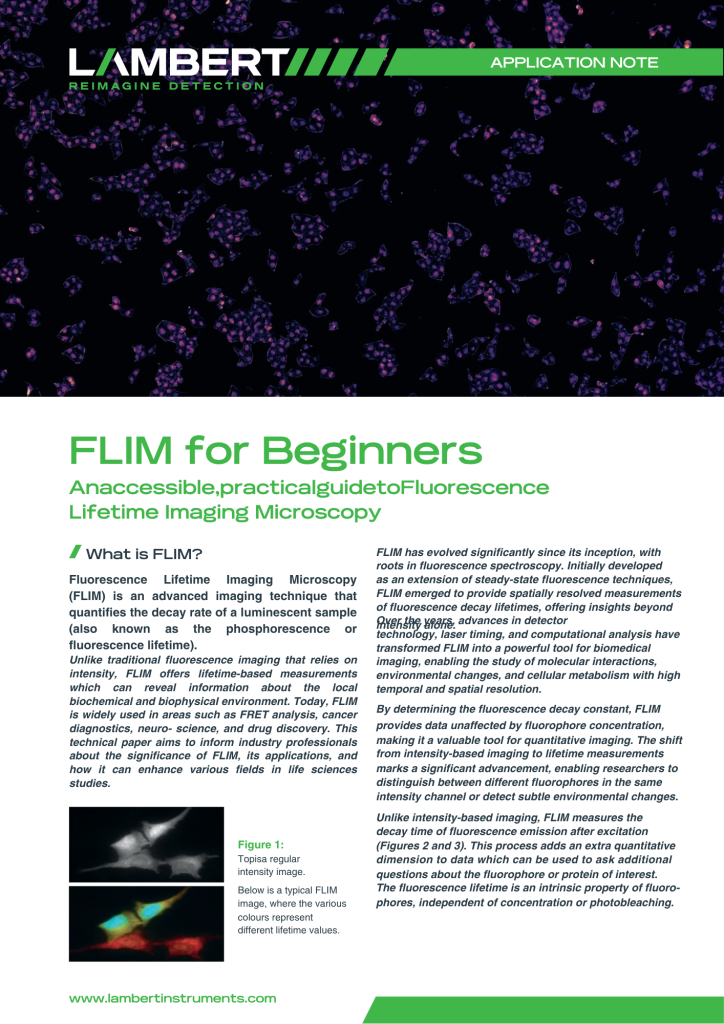
System Components
The LIFA vTAU system includes:
Dedicated LIFA Software
Light source(s) according to your application
Computer with USB and HDMI connection
On-site system installation (optional)
1 day of hands-on training (optional)
Phone, email and remote desktop support
LIFA Software
Seamless integration of hardware for full system control
Guides user through FLIM experiments from start to finish.
Supports third-party hardware for a flexible and expandable system.
Time-lapse capabilities for extended experiments.
Data export for seamless analysis and sharing.
Triggered recording for precise data capture.
SDK and API available for custom integrations.
Light sources
Multi-LED and/or Multi-LASER as required for your set up
Excitation light sources for frequency-domain fluorescence lifetime imaging, supplied according to your required wavelengths.
For widefield illumination, we provide multi-LED solutions.
For laser illumination, we offer multi-LASER options with single-mode, multi-mode, and liquid light guide configurations.
Multi-LED systems can also be provided with a liquid light guide.

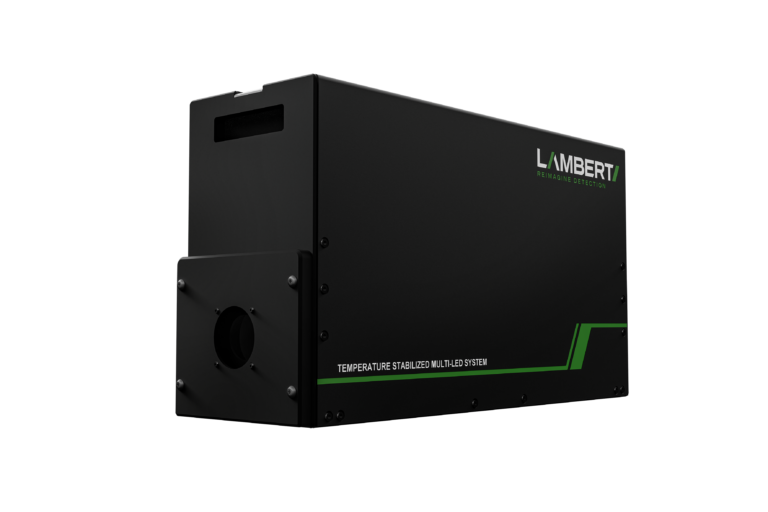
Configurations
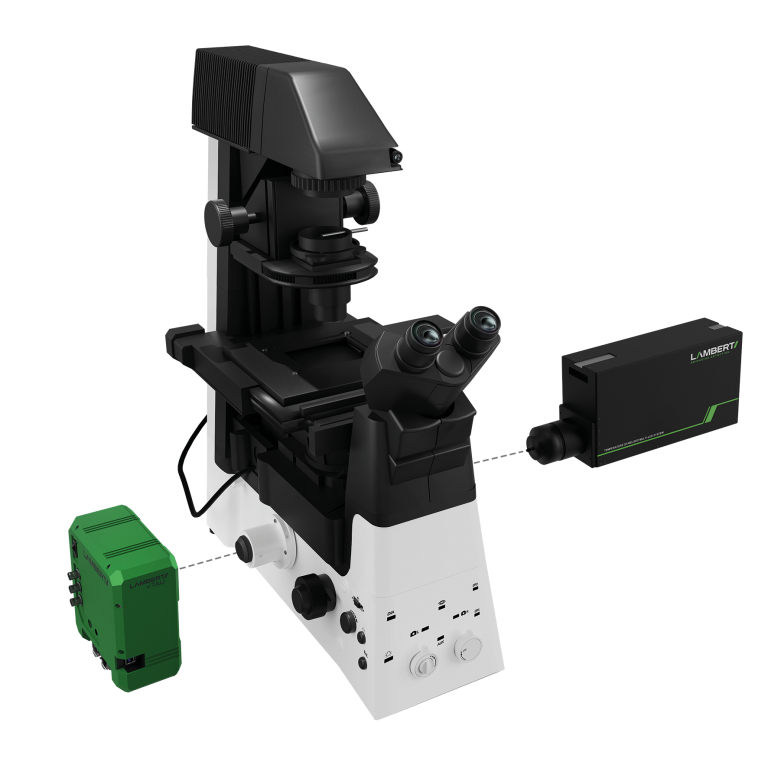
Widefield
On widefield microscopes, the vTAU camera in combination with the Multi-LED offers a capable yet compact FLIM solution. The vTAU is compatible with the camera port of widefield microscopes and the Multi-LED is compatible with the standard epifluorescence port of widefield microscopes.
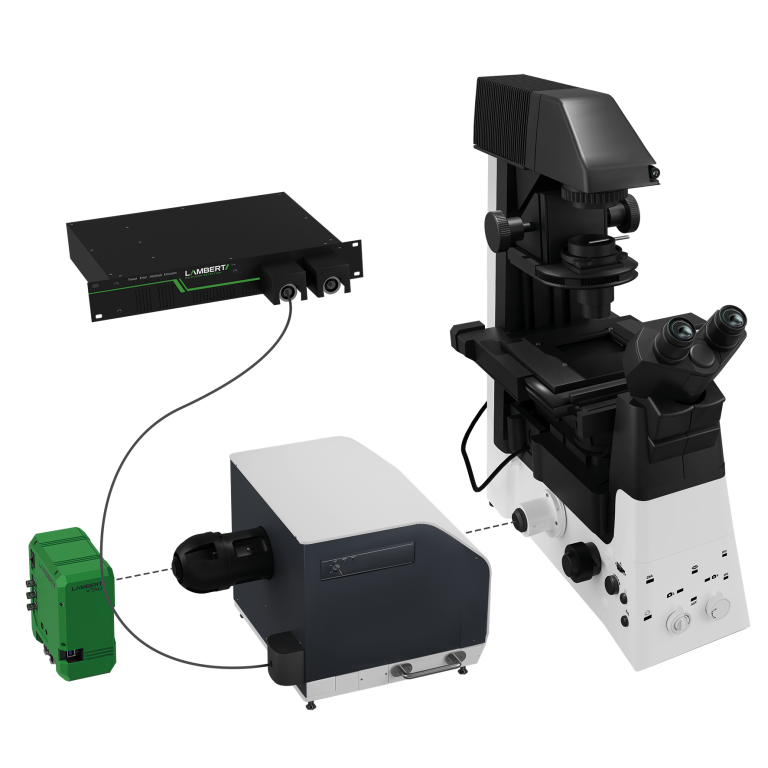
Spinning-disk confocal
Being a camera-based system, the Lambert Instruments LIFA vTAU system for frequency-domain FLIM is compatible with multi-beam confocal microscopy techniques, most notably the Yokogawa CSU spinning disk series (based on the Nipkow disk scanner), Andor Dragonfly, Crest V3/V2/Cicero, and the VTInfinity series by Visitech International.
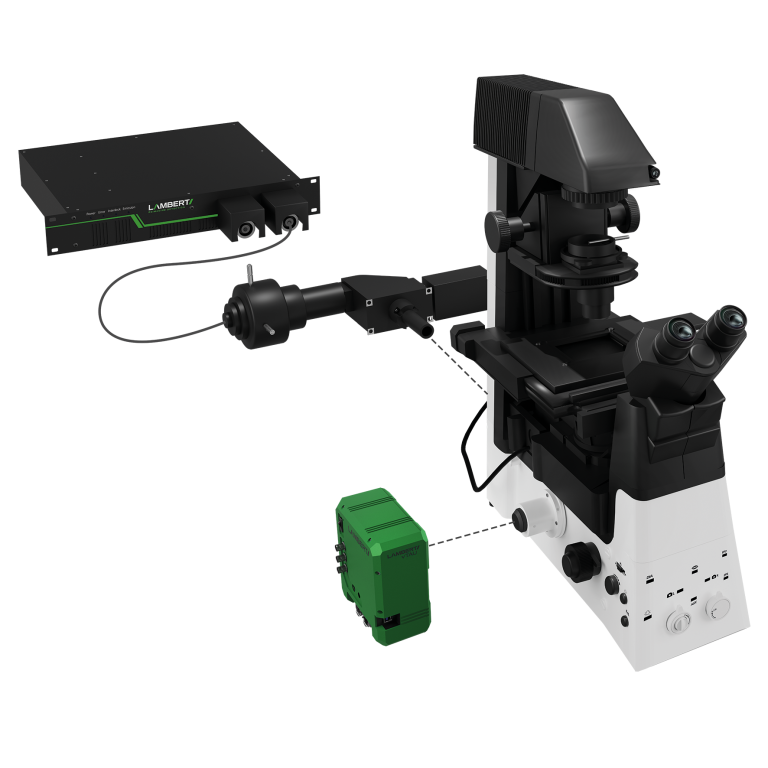
TIRF
Total Internal Reflection Fluorescence (TIRF) microscopy facilitates extremely high-contrast visualization and thereby high sensitivity of fluorescence near the cover glass. Typically, the optical section adjacent to the cover glass is about 100 nm. The unique combination of TIRF and frequency-domain FLIM makes it possible to measure lifetimes of, for instance, membrane receptors in order to identify their signalisation pathway.
Request More Information
Lambert Instruments BV
Leonard Springerlaan 19
9727 KB Groningen
The Netherlands
User Publications
Researchers around the world use the LIFA in their studies. Opposite is an overview of the most recent publications describing research that was done using a LIFA.
For a complete overview of applications, please visit our applications pages and our selected LIFA publications on the Lambert main site for more information.
A green lifetime biosensor for calcium that remains bright over its full dynamic range Jan 02, 2025 – FLIM
Experimental variables determine the outcome of RAS-RAS interactions Oct 05, 2024 – FLIM
Identification of an H-Ras nanocluster disrupting peptide July 09 2024 – FLIM
Fluorescence lifetime multiplexing with fluorogen activating protein FAST variants July 02, 2024 – FLIM
Mutant APC reshapes Wnt signaling plasma membrane nanodomains by altering cholesterol levels via oncogenic β-catenin July 19, 2023 – FLIM
Featured LIFA users







HIGH RESOLUTION
Gen II and Gen III image intensifiers offering the world’s highest resolution and sensitivity in the UV, visible or near infrared
IN-SITU FOCUS ADJUSTMENT
outer-body focus ring adjusts the internal relay optics without altering total length
COMPACT DESIGN
easily fits within your imaging or spectroscopy setup, with a super-compact 18mm version also available
Description
The TRiCATT is a compact lens-coupled image intensifier for scientific and industrial applications that require:
– Low-light level imaging
– Ultra-short exposures through fast gating
Any camera with C-mount and a 1/2″, 2/3″, or 1″ image sensor is compatible with the TRiCATT. You can find the right TRiCATT for your camera with our interactive calculator.
Applications
Time-resolved imaging and spectroscopy
Particle Image Velocimetry (PIV)
Laser Induced Fluorescence (LIF)
Diffuse Optical Tomography (DOT)
Time-gated luminescence
Forster Resonance Energy Transfer (FRET)
Oxygen imaging
Viscosity imaging
Single-molecule imaging
Bio- and chemiluminescence imaging
Solar PV and LED characterization
Combustion research
Time-gated Raman
Plasma physics
X-ray Imaging
Single photon imaging
Features
Small gate widths
Gate width down to less than 3 ns (FWHM) with minimal jitter.
High gate repetition widths
Up to 300 kHz / 2.5 MHz burst. 1Mhz Optional
Overexposure Protection
User-definable current limitation and optional shutter.
Easy Coupling
Efficient lens coupling to any CCD and CMOS camera (up to 500 fps) with C-mount input and output.
Relay Lens
The high quality relay lens transfers the intensified image to the image sensor of the attached camera very efficiently and without losses in resolution. If required we can provide the 0.5x relay lens with a back focal distance of 13 mm.
Camera
Along with the Image Intensifier TRiCATT Lambert Instruments can deliver different types of CCD and CMOS cameras. If you already have a camera, you can use our interactive calculator to determine which intensifier size and relay optics are best suited for your setup.

Match my camera
The relay optics of HiCATT and TRiCATT project the output of the image intensifier onto the sensor of your camera. This calculator helps you determine the optimal configuration of image intensifer diameter and relay optics for your camera and application.

Image Intensifiers
An image intensifier boosts the intensity of the incoming light. By converting photons to electrons and back to photons, the light intensity can be increased significantly. Scroll down for more information about how this works.
Another feature of an image intensifier is that it can act as an ultra-fast shutter. The photocathode can be switched between on and off in a matter of nanoseconds.

Photocathodes
The photocathode is the entrance of the image intensifier. This is where the incoming photons are converted to electrons. The quantum efficiency of the photocathode material specifies how efficient this conversion is for each wavelength.

Phosphors
The output of the image intensifier contains a layer of phosphorescent material. Upon impact of an electron, the phosphor screen will emit light. Depending on the type of phosphor, the intensity of the emitted light will decrease faster.
Specifications and Options
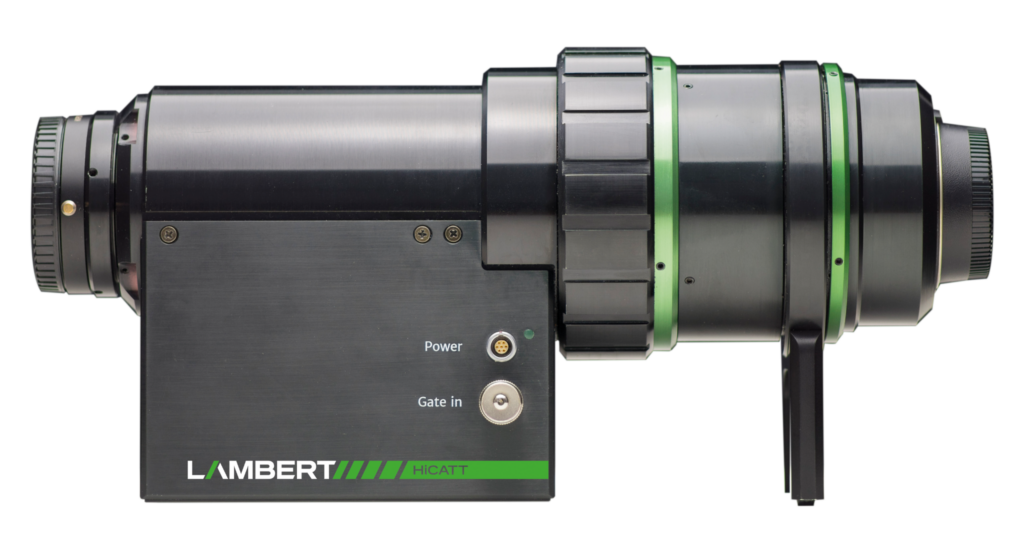
TRiCATT 25
Image intensifier: 25 mm image intensifier. Gated or modulated. P43 phosphor
Minimum gate time: 3 ns, 40 ns or 50 ns
Gate repetition rate*: 100 kHz, 300 kHz or 1 MHz
Relay optics**: 1:1 or 1.7:1 Fixed aperture
Input mount: F-mount and C-mount
Output mount: F-mount and C-mount
Mechanical shutter: Optional
Mounting plate: Optional

TRiCATT 18
Image intensifier: 18 mm image intensifier. Gated or modulated. P43 phosphor
Minimum gate time: 3 ns, 40 ns or 50 ns
Gate repetition rate*: 100 kHz, 300 kHz or 1 MHz
Relay optics**: 1:1 Fixed aperture
Input mount: F-mount and C-mount
Output mount: F-mount and C-mount
Mechanical shutter: Optional
Mounting plate: Optional
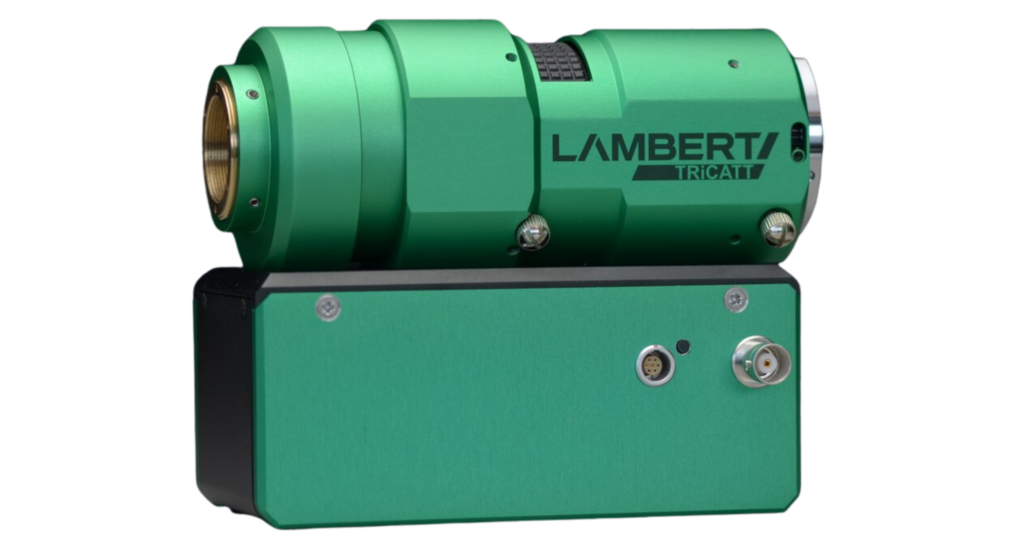
TRiCATT 18C
Image intensifier: 18 mm image intensifier. Gated or modulated. P43 phosphor
Minimum gate time: 3 ns, 40 ns or 50 ns
Gate repetition rate*: 100 kHz, 300 kHz or 1 MHz
Relay optics**: 1:1 Variable aperture
Input mount: C-mount
Output mount: C-mount
Mechanical shutter: Custom design upon request
Mounting plate: Optional
Gating Specifications
Standard Gating
Width range: 40 ns – 10 s
Resulting min. pulse width (increments): 40 ns (20ns)
Pulse repetition rate: < 10 MHz
Delay jitter (width): ± 10 ns (± 250 ps)
Insertion delay: 100 ns
Fast Gating
Width range: < 3 ns – 10 s
Resulting min. pulse width (increments): < 3 ns (10 ps)
Pulse repetition rate: < 16 MHz
Delay jitter (width): < 35 ps (< 35 ps)
Insertion delay: 20 ns
Trigger input: Programmable trigger level, divider and bursts (m out of n triggers)
Control Units
The control unit contains a micro-controller, a high voltage power supply and a RF (Radio Frequency) amplifier. The control unit has a low voltage input to receive the external modulation signal. It amplifies this signal and biases it with a variable DC photocathode voltage. The control unit offers control of the MCP voltage for setting the image intensifier gain. The control unit also monitors the light output, and switches off the image intensifier when its light output becomes too high. The control unit supports modulation frequencies up to 120 MHz.
| Manual Gain Controller | Gain Control | Gate Control | Gate Generator | |
|---|---|---|---|---|
| Gain control | ✔ | |||
| Anode current limiter | ✔ | ✔ | ||
| Shutter control | ✔ | ✔ | ||
| Gain control | ✔ | ✔ | ✔ | |
| Gate control | ✔ | ✔ | ||
| Internal trigger generator | ✔ | ✔ | ||
| Programmable gate | ✔ |
Options
Optional: Signal Generator
Instead of using an external modulation signal generator, we offer a built-in modulation signal generator as part of the control unit/power supply for frequencies up to 120 MHz.
Optional: TRiCAM
As an alternative to the lens-coupled ICCD camera (TRiCATT + CCD), we offer an ICCD camera in which the image intensifier is fiber-optically coupled to the sensor. This is the TRiCAM. This modulated intensified CCD camera is very compact and has a significantly higher gain than the lens-coupled combination as a result of the more efficient and compact fiber coupling.
Request More Information
Lambert Instruments BV
Leonard Springerlaan 19
9727 KB Groningen
The Netherlands
User Publications
Researchers around the world use the TRiCATT in their studies. Opposite is an overview of the most recent publications describing research that was done using a TRiCATT .
For a complete overview of applications, please visit our applications pages.

HIGH PERFORMANCE
delivering unprecedented stamina, speed and sensitivity
HIGH SPEED
single photon counting suitable for particle physics by making use of scintillation
HIGH SENSITIVITY
ranging from Deep UV to NIR to match the spectral needs of your application
Description
The HiCAM is a gated intensified high-speed high-sensitivity imaging camera. It has an integrated fiber-optically coupled image intensifier, which offers a unique combination of high speed and sensitivity down to single photon level. Because the HiCAM does not need high intensity light sources, it is suitable for use in low-light level conditions.
Applications
Super-slow motion combustion research for the automotive industry
Time-resolved imaging in plasma physics research
Dynamic phenomena in microscopy, e.g. Imaging the rotation of single molecules of ATPase
Laser-Induced Fluorescence (LIF)
Flow visualization and velocity measurements using Particle Image Velocimetry (PIV)
Time-resolved imaging of fluids for microfluidic research
Blood flow analysis
Time-resolved fluorescence
UV imaging for hydrogen combustion
Features
Ultra-short Gating
The camera’s effective exposure time can be reduced to < 3 ns (FWHM) for time resolved imaging, or capturing very fast events.
Fast Streaming
To transfer all the high-resolution image data, the HiCAM streams live over a CoaXPress (CXP) interface. The camera has four CXP connectors, each of which has a channel speed of 6.25 Gbit/s.
Longterm Streaming
The recordings can be directly streamed to the hard drive. For optimised recorders the length is limited only by drive capacity.
High-sensitivity Intensifiers
You can choose from a wide variety of high-sensitivity image intensifiers to match the spectral needs of your application.
Cycled Bursts
Adjust for changing light levels by cycling through three different gate widths and optionally combine this with the burst mode to optimize the dynamic range.
Fiber-optically Coupled
Our experienced engineers couple the sensor to the image intensifier with a fiber-optic window.

Image Intensifiers
An image intensifier boosts the intensity of the incoming light. By converting photons to electrons and back to photons, the light intensity can be increased significantly. Scroll down for more information about how this works.
Another feature of an image intensifier is that it can act as an ultra-fast shutter. The photocathode can be switched between on and off in a matter of nanoseconds.

Photocathodes
The photocathode is the entrance of the image intensifier. This is where the incoming photons are converted to electrons. The quantum efficiency of the photocathode material specifies how efficient this conversion is for each wavelength.
Videos
Super-slow motion video of a gas flame recorded with the Lambert Instruments HiCAM at 1000 fps (frame rate) and gating of 15 us (effective exposure time). Resolution: 1280 x 512 pixels.
High-speed recording of a cork burning in plasma. Recorded with a HiCAM at 5000 fps.
Recording of a beating heart of a zebrafish. Recorded at 2000 fps with the HiCAM on a fluorescence microscope. The blood cells were stained with a DS-red fluoropho.
A touch-me-not plant bursting open. Captured with a HiCAM with 18 us gating.
Specifications
HICAM, 1000
Framerate (Full Resolution): 1000 fps
Sensor Resolution: 1280 x 1024 pixels
Streaming: HiCAM 1000: CoaXPress
Bit Depth: 8 and 12 bit
HICAM, 2000
Framerate (Full Resolution): 2000 fps
Sensor Resolution: 1920 x 1080 pixels
Streaming: HiCAM 2000: CoaXPress
Bit Depth: 8
The dual-stage image intensifier, specially designed for high-speed cameras, can be equipped with a variety of photocathodes; ranging from ultra violet to infra red. Adapting the photocathode will give maximum output brightness to enhance Signal-to-Noise Ratio (SNR). Moreover, the image intensifier is fiber-optically coupled to a CMOS sensor. This further increases SNR, as compared to a lens-coupled system.
Request more information
Lambert Instruments BV
Leonard Springerlaan 19
9727 KB Groningen
The Netherlands
User Publications
Researchers around the world use the HiCAM for high-speed high-sensitivity imaging in their studies. Opposite is an overview of the most recent publications describing research that was done using a HiCAM.
For a complete overview of applications, please visit our applications pages.
– Nov 20, 2024
– 03 Jun, 2024
– 28 Aug, 2023
– Feb 22, 2023

ZOOM BACK INTO TIME
to optimise efficiency and reliability of your production process
BACK TO BACK RECORDINGS
without intermittent downloads
MULTI-CAMERA SYSTEM
view and record images with multiple cameras at the same time.
Description
Stamina combines advanced hardware with easy to use software to offer a complete multi-camera recording solution for your imaging challenges. With the complete imaging system it becomes possible to record, view and combine multiple cameras in one setup. Our software is compatible with a wide range of cameras, providing the option to integrate your own cameras into the imaging setup easily.
With Stamina, all recordings can be synchronised and all image data is directly streamed to the solid storage, enabling longterm streaming. With the external Application Programming Interface (API), Stamina can be further customised and integrated in your existing setup. Through the API, you have access to device settings, recording parameters and image data.
Stamina is a completely customizable multi-camera recording and imaging solution. Our experienced sales engineers will advise you on the right system for your application.
Applications
Troubleshooting high speed events (triggered recording)
Reliability engineering
Long-term multi camera recording
High speed / High resolution recording with multiple cameras
Features
Add your Own Camera
Stamina is compatible with a wide range of cameras, providing the option to integrate your own (high-speed) cameras into the imaging setup easily.
Complete Solution
Stamina combines advanced hardware with easy to use software to offer a complete solution for your imaging challenges.
Long term streaming
By directly streaming to the hard drive, Stamina makes long term streaming easy. The maximal recording length only depends on the available storage space.
Control all hardware into one place
Change and control the settings of all compatible hardware in one place with Capture.
API Available
Integrate Stamina into your existing setup with the Application Programming Interface (API). The following platforms are compatible with the API: MATLAB, LabVIEW, Python 3 (64 bit).
Video
System set up
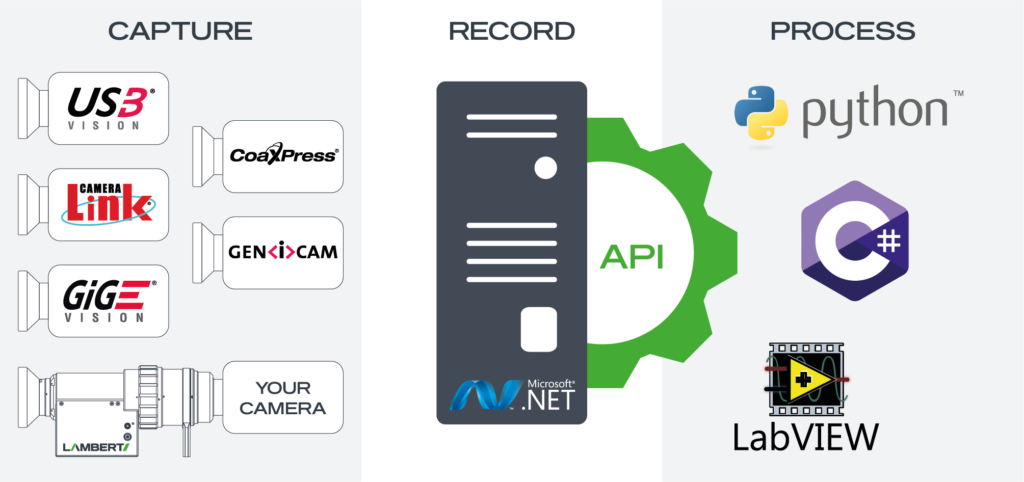
Request more information
Lambert Instruments BV
Leonard Springerlaan 19
9727 KB Groningen
The Netherlands
News Publications
Read about STAMINA’s launch at Photonics West 2022.
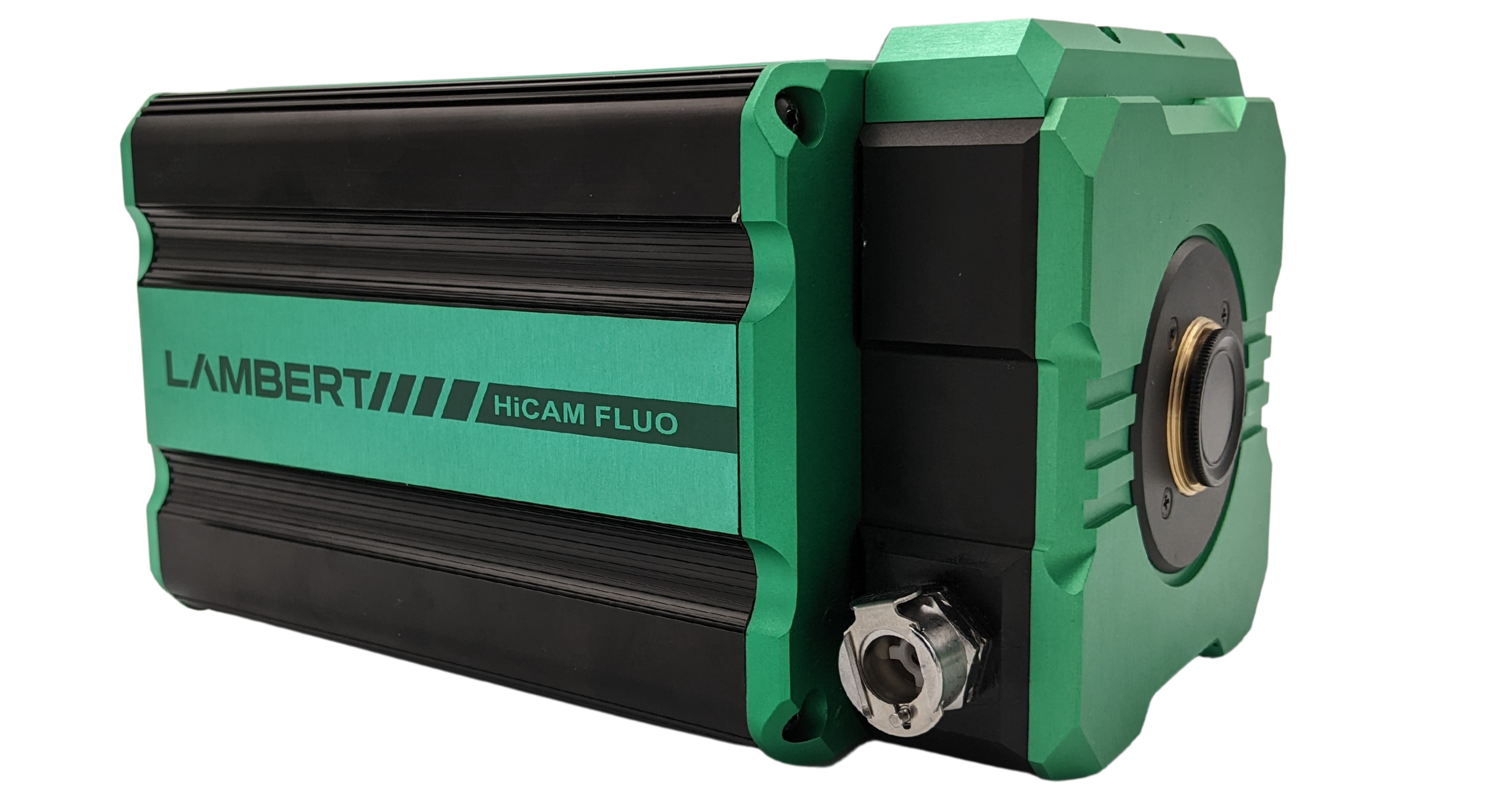
HIGH SPEED CAMERA
frame rate over 2000 fps
HIGH SENSITIVITY
down to single photon level
LONG TERM STREAMING
record directly to hard drive
Description
The HiCAM Fluo is a high-speed camera for fluorescence imaging applications. It records high resolution images at a frame rate over 2000 fps in the most challenging low-light conditions by using a cooled image intensifier. Packed into a compact aluminum enclosure, it is easy to attach the HiCAM Fluo to any fluorescence microscope.
Fluorescence Imaging Applications
High-speed fluorescence imaging, bioluminescence and chemiluminescence detection for in-vivo imaging
Time-resolved imaging of fluids for microfluidic research
Particle Image Velocimetry (PIV)
Time-resolved imaging and spectroscopy using ultra-short exposures (<3ns)
Laser-Induced Fluorescence (LIF)
Super-slow motion combustion research
Plasma physics research
· Single-photon imaging microscopy and quantum physics
Plasma physics research for fusion energy
Features
Fiber-optically coupled intensifier
This offers a unique combination of high speed imaging and increased light sensitivity down to single photon level.
CoaXPress
To transfer all high-resolution image data, the HiCAM Fluo streams live over a CoaXPress (CXP) interface. The camera features four CXP connectors, each supporting channel speeds of up to 6.25 Gbit/s (CXP-6). For higher bandwidth requirements, CXP-12 compatibility ensures even faster data transfer, optimizing performance for demanding imaging applications.
Ultra-Short Gating
With its gated image intensifier, the camera’s effective exposure time can be reduced. The minimum gate width of 10 ns (FWHM) increases the range of light levels at which the camera can be used. It also eliminates motion blur and enables time-resolved filtering.
Cooled Image Intensifier
The fanless design of the camera minimises vibrations to ensure sharp images. Very low noise levels are achieved by Peltier cooling the image intensifier. Noise levels are reduced by a factor of up to 100 times as compared to uncooled intensified cameras.

Image Intensifiers
An image intensifier boosts the intensity of the incoming light. By converting photons to electrons and back to photons, the light intensity can be increased significantly. Scroll down for more information about how this works.
Another feature of an image intensifier is that it can act as an ultra-fast shutter. The photocathode can be switched between on and off in a matter of nanoseconds.

Photocathodes
The photocathode is the entrance of the image intensifier. This is where the incoming photons are converted to electrons. The quantum efficiency of the photocathode material specifies how efficient this conversion is for each wavelength.
Fluorescence Imaging Videos
Recording of a beating heart of a zebrafish. Recorded at 2000 fps with the Lambert Instruments HiCAM on a fluorescence microscope. The blood cells were stained with a DS-red fluorophore.
monArch fluorescent voltage indicator observed with the Lambert Instruments HiCAM Fluo (1000 fps, 1200 x 1000 pixels).
SCAPE 2.0 dual-color, high-speed imaging of blood flow in a beating embryonic zebrafish heart acquired at 100 volumes per second over a 270 x 260 x 128 xyz micron field of view. The heart wall is shown in green (EGFP) and the red blood cells are shown in red (DsRed). Collaboration between Hillman Lab and Kimara Targoff.
Specifications
HICAM FLUO, 1000 FPS
Maximum resolution: 1280 x 1024 pixels
Frame rate:
1000 fps at full resolution
1500 fps at 1200 x 720 pixels
4000 fps at 640 x 480 pixels
7500 fps at 256 x 256 pixels
Pixel size: 6.6 um
Pixel depth: 8 or 12 bit
Minimum exposure time: 40 ns
Gating repetition rate: 100 kHz
Image intensifier: GaAsP (Others optional)
Computer interface: Streaming CoaXPress
Photon gain (max.): 36000 lm/m^2/lx
HICAM FLUO, 2000 FPS
Maximum resolution: 1920 x 1080 pixels
Frame rate:
2000 fps at full resolution
2500 fps at 1280 x 960 pixels
5100 fps at 640 x 480 pixels
6400 fps at 512 x 384 pixels
Pixel size: 10 um
Pixel depth: 8 bit
Minimum exposure time: 40 ns
Gating repetition rate: 100 kHz
Image intensifier: GaAsP (Others optional)
Computer interface: Streaming CoaXPress 2.0
Photon gain (max.): 36000 lm/m^2/lx
Request more information
Lambert Instruments BV
Leonard Springerlaan 19
9727 KB Groningen
The Netherlands
User Publications
Researchers around the world use the HiCAM Fluo in their studies. Opposite is an overview of the most recent publications describing research that was done using a HiCAM Fluo.
For a complete overview of applications, please visit our applications pages.
Imaging the voltage of neurons distributed across entire brains of larval zebrafish – December 16, 2023
Video-rate Raman-based metabolic imaging by Airy light-sheet illumination and photon-sparse detection – February 22, 2023
High-speed, high-content volumetric microscopy with sub-cellular resolution applied to cell-identity resolved C. elegans – April 24. 2022
Photon-Sparse, Poisson Light-Sheet Microscopy – September 20, 2021
Real-time volumetric microscopy of in vivo dynamics and large-scale samples with SCAPE 2.0 – Sep 27, 2019
Programmable Functionalization of Surfactant‐Stabilized Microfluidic Droplets via DNA‐Tags – April 8, 2019

KEY FEATURE / BENEFIT
Key feature, selling point or highlight of the product
View HiCATT
KEY FEATURE / BENEFIT
Key feature, selling point or highlight of the product
KEY FEATURE / BENEFIT
Key feature, selling point or highlight of the product
Product Description
Lorem ipsum dolor sit amet, consectetur adipiscing elit, sed do eiusmod tempor incididunt ut labore et dolore magna aliqua. Ut enim ad minim veniam, quis nostrud exercitation ullamco laboris nisi ut aliquip ex ea commodo consequat. Duis aute irure dolor in reprehenderit in voluptate velit esse cillum dolore eu fugiat nulla pariatur. Excepteur sint occaecat cupidatat non proident, sunt in culpa qui officia deserunt mollit anim id est laborum.
Product Video / Image Reel
Request a quote
Lambert Instruments BV
Leonard Springerlaan 19
9727 KB Groningen
The Netherlands
User Publications
Lorem ipsum dolor sit amet, consectetur adipiscing elit, sed do eiusmod tempor incididunt ut labore et dolore magna aliqua.
Ut enim ad minim veniam, quis nostrud exercitation ullamco laboris nisi ut aliquip ex ea commodo consequat. Duis aute irure dolor in reprehenderit in voluptate velit esse cillum dolore eu fugiat nulla pariatur. Excepteur sint occaecat cupidatat non proident, sunt in culpa qui officia deserunt mollit anim id est laborum.
Lorem ipsum dolor sit amet, consectetur adipiscing elit, sed do eiusmod tempor incididunt ut labore et dolore magna aliqua.
Ut enim ad minim veniam, quis nostrud exercitation ullamco laboris nisi ut aliquip ex ea commodo consequat. Duis aute irure dolor in reprehenderit in voluptate velit esse cillum dolore eu fugiat nulla pariatur. Excepteur sint occaecat cupidatat non proident, sunt in culpa qui officia deserunt mollit anim id est laborum.
Lorem ipsum dolor sit amet, consectetur adipiscing elit, sed do eiusmod tempor incididunt ut labore et dolore magna aliqua.
Ut enim ad minim veniam, quis nostrud exercitation ullamco laboris nisi ut aliquip ex ea commodo consequat. Duis aute irure dolor in reprehenderit in voluptate velit esse cillum dolore eu fugiat nulla pariatur. Excepteur sint occaecat cupidatat non proident, sunt in culpa qui officia deserunt mollit anim id est laborum.
Featured Users








